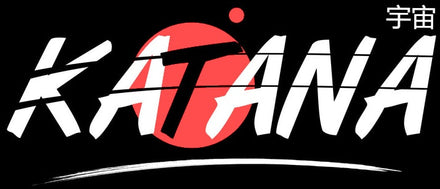Often called hara-kiri, seppuku is a ritualistic form of suicide originating from Japan's ancient samurai warrior class. This macabre tradition of hara-kiri has been portrayed in countless historical accounts and media narratives of the samurai. Discover the nuanced details behind this dark custom and its impact on Japanese society today.
What is Seppuku (Hara-kiri)?

Seppuku is an honorable form of ritual suicide through disembowelment, reserved exclusively for samurai warriors. In Japanese, hara-kiri translates to "stomach-cutting," with "hara" meaning stomach and "kiri" referring to cutting. Although "harakiri" and "seppuku" share the same meaning, the Japanese rarely use "harakiri" and prefer the term "seppuku." While "harakiri" focuses on the act of cutting the stomach, "seppuku" encompasses the entire traditional procedure of this ritual.
The origins of seppuku date back to the 12th century, serving as a means for upper-class and samurai to atone for their crimes, regain lost honor, or avoid disgraceful capture. Properly executed, seppuku was considered the noblest way for a samurai to die, though witnesses of this ritualistic suicide describe it as excruciatingly painful. Only samurai were allowed to perform harakiri; commoners were not permitted (even if they could, it would lack any significant value).
How is Seppuku Performed?

Seppuku (harakiri), in its most recognizable form, evolved into a highly ritualized display of noble and artistic suicide, also serving as a form of capital punishment for nobles, particularly from the 1600s onwards. The condemned individual wore a ceremonial white kimono signifying death and was granted a final meal. The execution blade, ranging from a long sword to a ceremonial knife, was then presented in the last dish. Before self-stabbing in the abdomen, the person had to compose a death poem and make two cuts: first horizontally, then vertically, resembling the letter "L."
Once the incision was complete, a second individual (kaishakunin) stepped forward to deliver the fatal blow to the condemned's exposed neck. However, to preserve honor in this act, the cut was planned not to sever the neck completely but leave enough flesh for the head to fall naturally into the arms of the executed individual. This way, not only did the spectators' garments remain unstained, but the head fell into the samurai's hands, as if he held it. Women who practiced seppuku—often the wives of samurai seeking to avoid capture—tied their legs together before cutting to maintain a modest posture in death.
Why Did the Samurai Practice Belly-Cutting?

The short answer is that they believed the soul resided in the belly. Some accounts mention that the origins of ritualistic belly-cutting date back to the 7th century BCE in China. In ancient Asia, many believed that the spirit resided in the belly, and cutting it allowed the spirit to be set free. Performing such an act required great courage and mental strength, qualities exclusive to true samurai. Hesitation, smiling, or showing signs of weakness were seen as dishonorable and cowardly. It is reported that on certain occasions, samurai became lost and collapsed during the ritual, and they were beheaded forcefully.
Is Seppuku an Act of Willingness?

In fact, there are two types of seppuku: voluntary and obligatory. Voluntary seppuku was often committed to restore honor after a misdeed or failure or to avoid capture by an invading army. Some samurai also chose to end their lives through seppuku following the death of their daimyo, a practice known as oibara. Even in death, the Japanese cared about their image in society. A dishonorable death at the hands of an enemy would be a shameful "haji."
Compulsory seppuku functioned as a method of enforcing capital punishment upon dishonored samurai who engaged in acts of treachery or violent offenses. Seppuku could be demanded by the victorious side in a conflict as a condition for surrender and future peace. In such cases, the leader(s) of the defeated camp were compelled to perform seppuku, thereby eliminating any political and military opposition to the winner. Seppuku forced against a samurai's will is known as tsumebara. The heads of ordinary criminals were cut off without any ceremony, while only samurai had the privilege of belly-cutting. Obligatory seppuku was prohibited in 1873.
In general, having the opportunity to perform seppuku was considered an honor rather than a punishment. During mandated harakiri, the blade, without a "handle," was wrapped in a piece of white cloth or paper and presented to the samurai to prevent any possibility of self-defense















